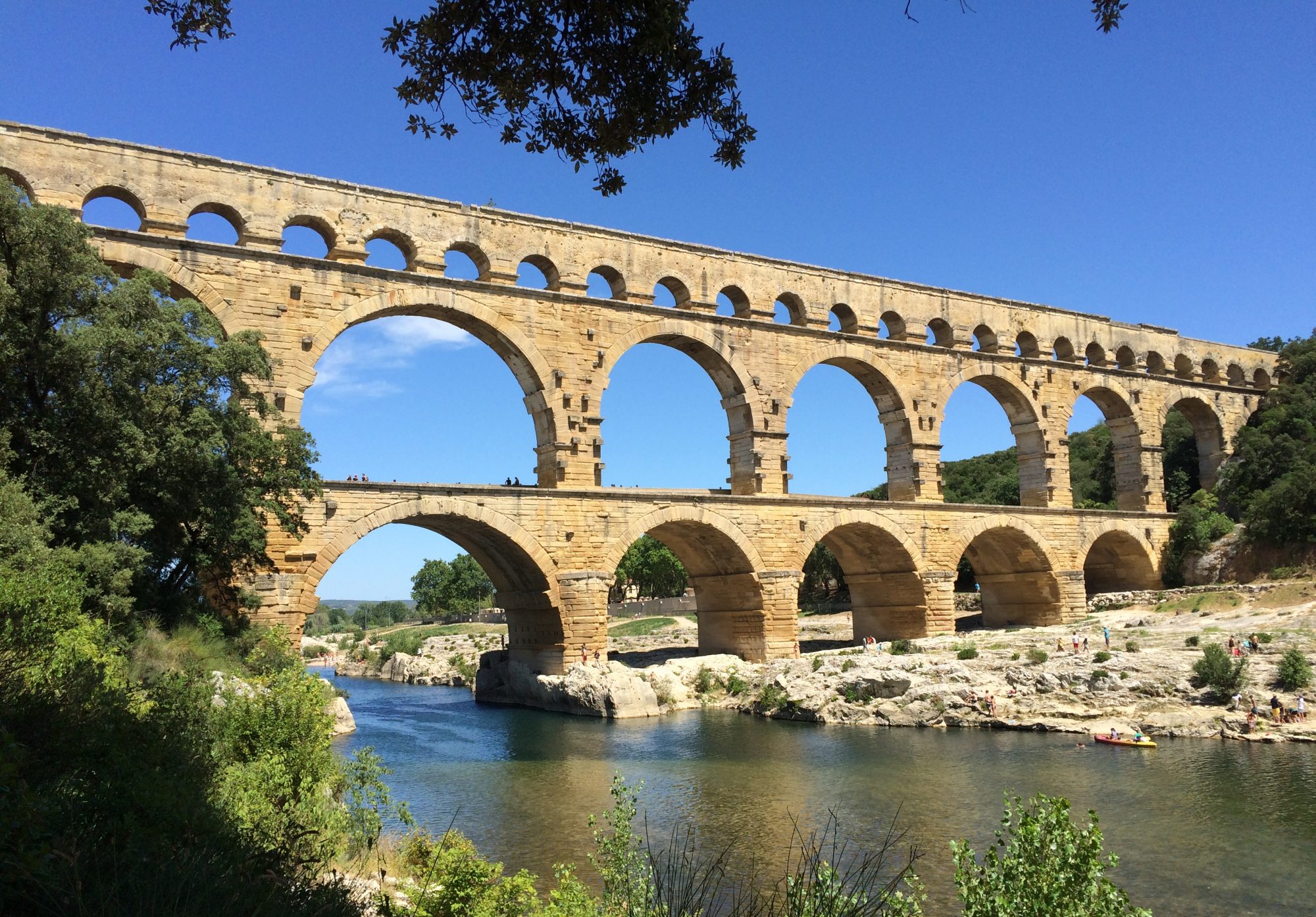Projekttitel: eManual Alte Geschichte
Modul [optional]:
Autor_in: Caesar
Lizenz: CC-BY-NC-SA
Caes. Bell. Civ. III, 88-94 – Original:
Caesar cum Pompei castris adpropinquasset, ad hunc modum aciem eius instructam animum advertit: [2] erant in sinistro cornu legiones duae traditae a Caesare initio dissensionis ex senatus consulto; quarum una prima, altera tertia appellabatur. in eo loco ipse erat [3] Pompeius. mediam aciem Scipio cum legionibus Syriacis tenebat. Ciliciensis legio coniuncta cum cohortibus Hispanis, quas traductas ab Afranio docuimus, in dextro [4] cornu erant collocatae. has firmissimas se habere Pompeius existimabat. reliquas inter aciem mediam cornuaque interiecerat numeroque cohortes cx expleverat. [5] haec erant milia xlv, evocatorum circiter duo, quae ex beneficiariis superiorum exercituum ad eum convenerant; quae tota acie disperserat. reliquas cohortis vii castris propinquisque castellis praesidio disposuerat. [6] dextrum cornu eius rivus quidam impeditis ripis muniebat; quam ob causam cunctum equitatum, sagittarios funditoresque omnes sinistro cornu obiecerat.
Caesar superius institutum servans x legionem in dextro cornu, nonam in sinistro collocaverat, tametsi erat Dyrrachinis proeliis vehementer adtenuata, et huic sic adiunxit octavam, ut paene unam ex duabus efficeret, [2] atque alteram alteri praesidio esse iusserat. cohortes in acie lxxx constitutas habebat, quae summa erat milium [3] xxii; cohortes vii castris praesidio reliquerat. sinistro cornu Antonium, dextro P. Sullam, mediae acie Cn. Domitium praeposuerat. ipse contra Pompeium constitit. [4] simul iis rebus animadversis, quas demonstravimus, timens ne a multitudine equitum dextrum cornu circumveniretur, celeriter ex tertia acie singulas cohortes detraxit atque ex his quartam instituit equitatuique opposuit, et quid fieri vellet ostendit, monuitque eius diei [5] victoriam in earum cohortium virtute constare. simul tertiae aciei totique exercitui imperavit, ne iniussu suo concurrerent; se cum id fieri vellet, vexillo signum daturum.
Sed nostri milites dato signo cum infestis pilis procucurrissent atque animum advertissent non concurri a Pompeianis, usu periti ac superioribus pugnis exercitati sua sponte cursum represserunt et ad medium fere spatium constiterunt, ne consumptis viribus adpropinquarent, parvoque intermisso temporis spatio ac rursus renovato cursu pila miserunt, celeriterque, ut erat praeceptum a Caesare, gladios strinxerunt. [2] neque vero Pompeiani huic rei defuerunt. nam et tela missa exceperunt et impetum legionum tulerunt et ordines conservaverunt [3] pilisque missis ad gladios redierunt. eodem tempore equites ab sinistro Pompei cornu, ut erat imperatum, universi procucurrerunt, omnisque multitudo sagittariorum [4] se profudit. quorum impetum noster equitatus non tulit, sed paulum loco motus cessit, equitesque Pompei hoc acrius instare et se turmatim explicare aciemque nostram [5] a latere aperto circumire coeperunt. quod ubi Caesar animum advertit, quartae aciei, quam instituerat sex [6] cohortium numero, dedit signum. illae celeriter procucurrerunt infestisque signis tanta vi in Pompei equites impetum fecerunt, ut eorum nemo consisteret, omnesque conversi non solum loco excederent, sed protinus incitati [7] fuga montes altissimos peterent. quibus submotis omnes sagittarii funditoresque destituti inermes sine praesidio [8] interfecti sunt. eodem impetu cohortes sinistrum cornu pugnantibus etiamtum ac resistentibus in acie Pompeianis circumierunt eosque a tergo sunt adorti.
Eodem tempore tertiam aciem Caesar quae quieta fuerat et se ad id tempus loco tenuerat, procurrere iussit. [2] ita cum recentes atque integri defessis successissent, alii autem a tergo adorirentur, sustinere Pompeiani non potuerunt atque universi terga verterunt. [3] neque vero Caesarem fefellit quin ab iis cohortibus, quae contra equitatum in quarta acie collocatae essent, initium victoriae oriretur, ut ipse in cohortandis militibus pronuntiaverat. [4] ab his enim primum equitatus est pulsus, ab isdem factae caedes sagittariorum ac funditorum, ab isdem acies Pompeiana a sinistra parte erat circumita atque initium fugae factum. [5] sed Pompeius ut equitatum suum pulsum vidit atque eam partem, cui maxime confidebat, perterritam animum advertit, aliis diffisus acie excessit protinusque se in castra equo contulit, et iis centurionibus, quos in statione ad praetoriam portam posuerat, clare, ut milites exaudirent, ‚tuemini‘ inquit ‚castra et defendite diligenter, siquid durius acciderit. ego reliquas portas circumeo et castrorum praesidia confirmo.‘ [6] haec cum dixisset, se in praetorium contulit summae rei diffidens et tamen eventum expectans.
Projekttitel: eManual Alte Geschichte
Modul [optional]:
Übersetzung: William Duncan
Lizenz: CC-BY-NC-SA
Übersetzung:
When Caesar approached Pompey’s camp, he found his army drawn up in this manner: In the left wing were the two legions delivered by Caesar, at the beginning of the quarrel, in consequence of a decree of the senate; one of which was called the first, the other the third legion: and here Pompey commanded in person. Scipio was in the centre, with the legions he had brought out of Syria. The Cilician legion, joined to the Spanish cohorts, brought over by Afranius, formed the right wing. These Pompey esteemed his best troops, distributing the less expert between the wings and the main body. He had in all a hundred and ten cohorts, amounting to five and forty thousand; besides two cohorts of volunteers, who had served under him in former wars; and who, out of affection to their old general, though their legal time was expired, flocked to his standard on this occasion, and were dispersed amongst the whole army. His other seven cohorts were left to guard the camp and the adjoining forts. As the Enipeus, a river with very steep banks, covered his right wing, he placed all his horse, slingers, and archers in the left. Caesar observing his ancient custom, placed the tenth legion in the right, and the ninth in the left wing. As this last had been considerably weakened by the general actions at Dyrrhachium, he joined the eighth to it in such manner, that they formed as it were but one legion, and had orders mutually to relieve each other. His whole army amounted to fourscore cohorts, making in all twenty-two thousand men; besides two cohorts left to guard the camp. Domitius Calvinus was in the centre, Mark Antony on the left, and P. Sylla on the right. Caesar took his post opposite to Pompey, at the head of the tenth legion. And as he had observed the disposition of the enemy contrived to out-flank his right wing, to obviate that inconvenience, he made a draught of six cohorts from his rear line, formed them into a separate body, and opposed them to Pompey’s horse; instructing them in the part they were to act; and admonishing them, that the success of that day would depend chiefly on their courage. At the same time, he charged the whole army, and in particular the third line, not to advance to battle without orders; which, when he saw it proper, he would give, by making the usual signal.
[…]Caesar’s soldiers entirely defeated Pompey’s hopes, by their good discipline and experience. For, perceiving the enemy did not stir, they halted, of their own accord, in the midst of their career; and having taken a moment’s breath, put themselves, a second time, in motion; marched up in good order, flung their javelins, and then betook themselves to their swords. Nor did Pompey’s men act with less presence of mind: for they sustained our attack, kept their ranks, bore the discharge of our darts: and having launched their own, immediately had recourse to their swords. At this instant, Pompey’s horse, accompanied by the archers and slingers, attacked Caesar’s; and having compelled them to give ground, began to extend themselves to the left, in order to flank the infantry. Whereupon Caesar gave the appointed signal to the six cohorts, who fell on the enemy’s horse with such fury, that they not only drove them from the field of battle, but even compelled them to seek refuge in the highest mountains. The archers and slingers, deprived of their protection, were soon after cut to pieces. Meanwhile the six cohorts, not content with this success, wheeled round upon the enemy’s left wing, and began to charge it in the rear: whereupon Caesar, perceiving the victory so far advanced, to complete it, brought up his third line, which till then had not engaged. Pompey’s infantry being thus doubly attacked, in front by fresh troops, and in rear, by the victorious cohorts, could no longer resist, but fled to their camp. Nor was Caesar mistaken in his conjecture, when, in exhorting his men, he declared that victory would depend chiefly on the six cohorts, which formed the body of reserve, and were stationed to oppose the enemy’s horse; for by them were their cavalry defeated, their archers and slingers cut to pieces, and their left wing surrounded and forced to fly.
Pompey seeing his cavalry routed, and that part of the army on which he chiefly depended put into disorder, despaired of being able to restore the battle, and quitted the field. Repairing immediately to his camp, he said aloud, to the centurions, who guarded the pretorian gate, so as all the soldiers might hear him: „Take care of the camp, and defend it vigorously in case of an attack. I go to visit the other gates, and give orders for their defence.“ This said, he retired to his tent, despairing of success, yet waiting the event.
Projekttitel: eManual Alte Geschichte
Modul [optional]:
Autor_in: Falk Wackerow
Lizenz: CC-BY-NC-SA
Caes. Bell. Civ. III, 88-94
Leitfragen:
1) Welche Vorgeschichte hat der Kampf bei Pharsalos?
2) Wie gelang es Caesar die Schlacht für sich zu entscheiden?
3) Welche Folgen hatte der Ausgang der Schlacht auf den weiteren Verlauf des Bürgerkrieges?
Kommentar:
Nach dem fluchtartigen Rückzug der Senatspartei aus Italien gelang es Caesar zunächst nicht, seinen Gegnern zu folgen, da die Adria von den weit überlegenen feindlichen Seestreitkräften blockiert war. Statt selbst eine starke Flotte aufzubauen, was Monate gedauert und so den Pompeianern sehr viel Zeit zur Vorbereitung gegeben hätte, ließ Caesar noch im Winter einen Teil seiner Truppen ohne Bedeckung als Vorhut übersetzen. Er musste aufgrund seiner zahlenmäßigen Unterlegenheit unbedingt die Initiative behalten und seine Gegner vor sich hertreiben, wenn sein Plan gelingen sollte. Die waghalsige Überfahrt glückte, auch wenn die Voraustruppen bald von den hoffnungslos überlegenen Pompeianern bedrängt wurden. Auch auf der zweiten Überquerung entgingen Caesars Legionen unter Marcus Antonius der feindlichen Seemacht, wurden aber abgetrieben, sodass die beiden Heerführer ihre Armeen erst wieder vereinigen mussten. Zwischenzeitlich kam es zu ersten Auflösungserscheinungen aufseiten der Pompeianer aufgrund der schwachen Moral. Das erste Aufeinandertreffen bei Dyrrhachium, das eigentlich keine regelrechte Schlacht, sondern eine Aneinanderreihung von Scharmützeln war, endete mit einem Patt und Verlusten auf beiden Seiten. Ungeachtet der Vertagung der Entscheidung fühlten sich die Pompeianer bereits als Sieger, vor allem, weil Caesar sich nach Thessalien zurückzog. Einige Wochen später kam es dann zur Schlacht bei Pharsalos. Als er sah, wie Pompeius‘ Soldaten das Lager abbauten und den Hügel, auf dem es stand, herunterkamen, ließ er den Befehl zum Angriff erteilen. Trotz seiner deutlichen zahlenmäßigen Unterlegenheit hatte Caesar einige Vorteile auf seiner Seite. Vor allem die Moral seiner Truppen war weit besser, sie waren Strapazen gewohnt und in Kriegsdingen erfahren. Der angeblich siebenfachen Überlegenheit der gegnerischen Kavallerie setzte er eine neue Formation entgegen, die er in Germanien kennen gelernt hatte: die gemischte Kohorte (cohors equitata), bestehend aus Reitern und Fußsoldaten. Zudem hielt er sechs Kohorten in Reserve. Als die Schlachtreihen aufeinanderstießen, waren die Befehlshaber der Senatspartei siegesgewiss. Ihre Reiterei sollte leichtes Spiel mit ihrem Widerpart haben. Doch nicht nur hielt die gemischte Kohorte Caesars Stand, mithilfe der Reserve gelang es ihr sogar, die gegnerische Kavallerie in die Flucht zu schlagen und anschließend die feindliche Hauptkampflinie im Rücken zu umfassen. Was folgte, war die typische Massenflucht und damit die Niederlage für Pompeius und seine Mitstreiter. Ein Großteil seiner Armee ging verloren, noch schlimmer waren die Folgen für die Moral. Viele Soldaten liefen über, Caesar nahm sie unter seine Truppen auf. Seine Position hatte sich nach den Niederlagen in Nordafrika und der Schlappe bei Dyrrhachium deutlich gebessert, nun konnte er in die Offensive gehen. Pompeius verweilte nicht lange in Griechenland, sondern floh mit wenigen Getreuen nach Ägypten, wo ihn bald der Tod ereilen sollte.

